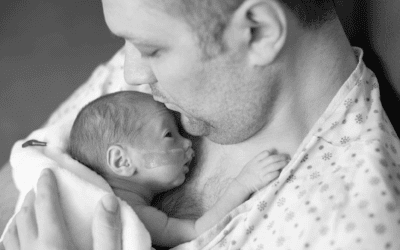Finding ways to streamline NICU care while improving the quality of care is essential, especially for these most vulnerable patients. Custom packs promote standardised insertion procedures, ensuring maximum barrier precautions and reduced risk of infection. International guidelines clearly demonstrate that use of a comprehensive procedure pack with maximum sterile barrier protection significantly reduces the risk of catheter related bloodstream infection[1].
What is a Custom Procedure Pack?
A Custom Procedure Pack allows you to create a high-quality pack to match your local protocol, incorporating all the items you need. Custom packs can standardise procedures, reduce cost, and ensure maximum barrier precautions, therefore reducing the associated risk of infection.
These are bespoke high-quality packs tailored to meet a department or Trust’s exact clinical requirements. Custom Procedure Packs give Neonatal professionals true peace of mind throughout manufacturing, sterilisation, distribution, warehousing, implementation, and training.
Using custom packs also supports consistent training and onboarding for new department staff due to their simplicity and standardised layout, which helps reinforce best practice and reduces variability in technique.
No one custom pack is the same, and they can be continuously tailored to meet changing demands within the Neonatal department, ensuring that medical procedures can be performed with confidence, care and efficiency.
Catheter Placement: Requirements and the Role of Custom Packs
Within Neonatology, Custom Procedure Packs typically include Long Lines or Umbilical Catheters. These products are critical in neonatology as they provide reliable vascular access for the administration of essential fluids, medications, parenteral nutrition, and for monitoring central venous pressure in critically ill or premature infants.
Placement involves identifying the correct vessel (arterial or venous), preparing the insertion site with sterile drapes and antiseptic, and using appropriately sized catheters and securement devices.
Umbilical Catheters
Umbilical catheterisation is a critical procedure in neonatal care, requiring meticulous aseptic technique and precise equipment to ensure safe and effective vascular access.
When using the umbilical for vascular access, it is recommended to place an umbilical catheter as early as possible after birth, for optimal access and reduced complication risk[2],[3]. It is therefore important to minimise both delays in placing this access, particularly in neonates requiring intensive support, to help to reduce the time potentially life-saving interventions are able to take place.
Long Line Catheters
Long line catheterisation is an essential procedure in neonatal care, providing secure venous access for prolonged therapy. As with all central access techniques, strict aseptic practice and appropriate equipment are vital to minimise infection risk and ensure safe placement.
In critically ill neonates, timely access is crucial. Custom Procedure Packs designed for neonatal long line insertion help reduce delays by providing all necessary components in one sterile kit, streamlining preparation, supporting clinical efficiency, and enabling faster delivery of potentially life-saving treatment.
Typically, these packs include a neonatal-sized long line catheter, sterile drapes, antiseptic applicators, syringes, securement devices, and dressings, all selected to meet the specific needs of neonatal patients and support best practice in vascular access.
The Value of Custom Procedure Packs
To meet these requirements, Custom Procedure Packs are tailored to include all essential components, such as; dilators and a wide range of forceps, drapes, catheters, securement tapes and dressings, and sterile gloves, all arranged in the order of use.
This not only ensures compliance with infection prevention protocols and national safety standards but also reduces setup time, minimises the risk of contamination, and supports consistency across clinical teams.
Benefits of Custom Procedure Packs in Neonatology
Besides being able to streamline the time it takes to set up for a procedure, developing your own Custom Procedure Packs comes with several benefits including:
- Promoting Aseptic non touch techniques – support infection prevention bundles and compliance with safety standards[4]
- Promoting best practice and improved outcomes in Neonatal care with improved procedural efficiency
- By having standardised, well-prepared procedures, including having Custom Procedure Packs to hand, teams will see substantial reductions in set-up and treatment times, and quality improvement. A study focusing on making quality improvements, demonstrated that implementing evidence-based interventions, including streamlined procedures, significantly reduced set up and treatment times in neonatal care. Specifically, reducing the time to administer antibiotics improved from 162 minutes to 74, and admission times to NICU were also reduced from 66.4±16 minutes to 41±13.8 minutes[5]. This highlights how standardised, well-prepared protocols improves neonatal patient outcomes within NICU.
- Standardise clinical practice
- Improve stock management and simplify procurement with fewer SKUs and single barcode tracking
- Reduce waste and environmental impact by eliminating unused items
- Cost savings
Conclusion
Custom Procedure Packs are a practical and effective solution for enhancing neonatal care. By incorporating all necessary components in a single, sterile package, they help streamline procedures, reduce infection risks, and support consistent clinical practice. Their adaptability ensures they remain relevant as clinical needs evolve, while also offering measurable improvements in efficiency, safety, and cost-effectiveness. For neonatal departments to deliver the highest standards of care, custom packs are not only convenient; they are an essential tool in supporting better outcomes for the most vulnerable of patients.
References
[1] World Health Organization. Guidelines for the prevention of bloodstream infections and other infections associated with the use of intravascular catheters: Part I – Peripheral catheters. Geneva: WHO; 2024. Available from: https://www.who.int/publications/i/item/9789240093829
[2] Royal Cornwall Hospitals NHS Trust. Umbilical Line Insertion (UAC, UVC) Neonatal Clinical Guideline. Version 5.0. March 2025. Available from: https://doclibrary-rcht.cornwall.nhs.uk/DocumentsLibrary/RoyalCornwallHospitalsTrust/Clinical/Neonatal/UmbilicalLineInsertionUACUVCNeonatalGuideline.pdf
[3] NHS Greater Glasgow and Clyde. Umbilical Catheters – Neonatology Guidelines. Available from: https://clinicalguidelines.scot.nhs.uk/ggc-paediatric-guidelines/ggc-paediatric-guidelines/neonatology/umbilical-catheters/
[4] British Association of Perinatal Medicine. Service and Quality Standards for Provision of Neonatal Care in the UK. London: BAPM; 2022. Available from: https://www.bapm.org/resources/service-and-quality-standards-for-provision-of-neonatal-care-in-the-uk
[5] Amuji N, Rao SA, Nagaraju PY, et al. Improving the quality of care for preterm infants in the golden hour. BMJ Open Qual. 2025;14(1):e002277. doi:10.1136/bmjoq-2023-002277


